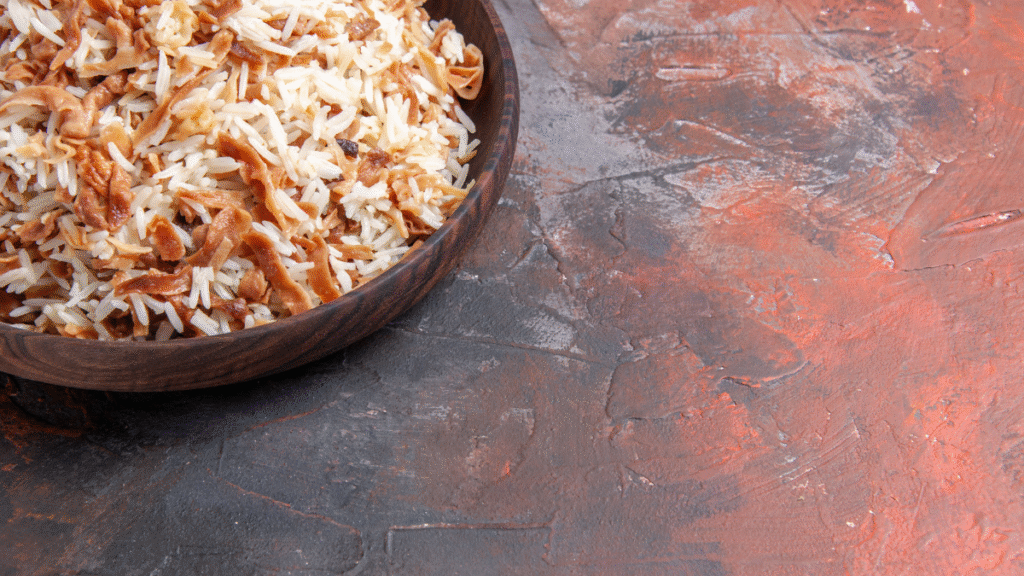In recent years, the demand for healthier food options has significantly increased. As more people shift towards nutritious diets, traditional staples like white rice are being replaced with whole grain alternatives. One such popular choice is brown basmati rice, known for its unique flavor, long grains, and numerous health benefits. This article explores everything you need to know about brown basmati rice — its nutritional profile, health advantages, cooking tips, and why it’s a great choice for your daily meals.
What is Brown Basmati Rice?
Brown basmati rice is a whole grain variety of the well-known basmati rice, commonly grown in India and Pakistan. Unlike white basmati rice, it retains its bran and germ layers during processing, making it richer in fiber, vitamins, and essential minerals. The result is a nutty flavor and a slightly chewy texture, ideal for health-conscious individuals.
This type of rice is distinguished not only by its brown color but also by its long, slender grains that elongate even further when cooked. The aroma is another standout feature, often described as earthy and slightly popcorn-like, which adds depth to a variety of dishes.
Nutritional Value of Brown Basmati Rice
One of the primary reasons behind the growing popularity of brown basmati rice is its impressive nutritional content. A typical serving contains:
- High fiber: Helps in digestion and promotes a healthy gut.
- Complex carbohydrates: Provides slow-releasing energy.
- Protein: Supports muscle repair and growth.
- B vitamins: Important for metabolism and brain health.
- Magnesium and potassium: Aid in heart health and muscle function.
Additionally, this rice has a relatively low glycemic index compared to other rice types, which means it doesn’t cause a rapid spike in blood sugar levels — a crucial consideration for diabetics.
Health Benefits of Brown Basmati Rice
1. Supports Digestive Health
Thanks to its high fiber content, brown basmati rice promotes regular bowel movements and prevents constipation. The presence of insoluble fiber adds bulk to the stool and enhances gut health over time.
2. Aids Weight Management
Including brown basmati rice in your meals can help you feel full for longer periods, thereby reducing the chances of overeating. The fiber slows digestion, which contributes to satiety and can assist with weight loss or maintenance.
3. Heart-Friendly Choice
Rich in magnesium and low in saturated fats, this rice supports heart health by helping to manage blood pressure and reducing bad cholesterol (LDL). Whole grains have also been linked to a lower risk of cardiovascular diseases.
4. Diabetes-Friendly Option
Because of its low glycemic index, brown basmati rice causes a slower rise in blood sugar. This makes it a suitable grain choice for those managing type 2 diabetes or those looking to prevent it.
5. Gluten-Free Alternative
For individuals with celiac disease or gluten sensitivity, brown basmati rice is a safe, naturally gluten-free option that can be used in various dishes without triggering adverse reactions.
Cooking Tips for Brown Basmati Rice
Cooking brown basmati rice requires a bit more time and water than its white counterpart due to the presence of bran layers. Here are some tips to get perfectly cooked rice:
- Soak before cooking: Soak the rice in water for at least 30 minutes to 1 hour to reduce cooking time and enhance texture.
- Use the right ratio: The ideal water-to-rice ratio is about 2.5:1 for stovetop cooking.
- Simmer slowly: After bringing the water to a boil, reduce the heat to low, cover, and let it simmer for 30–40 minutes until all the water is absorbed.
- Fluff and rest: Let the rice rest off the heat for 5–10 minutes before fluffing with a fork.
Versatile Ways to Include Brown Basmati Rice in Meals
One of the greatest advantages of brown basmati rice is its versatility in the kitchen. Here are a few ideas to incorporate it into your daily meals:
- Rice bowls: Top with grilled vegetables, tofu, or chicken for a balanced meal.
- Salads: Mix with beans, herbs, and lemon dressing for a hearty whole-grain salad.
- Pilafs: Cook with spices, nuts, and dried fruits for a flavorful side dish.
- Curries: Serve alongside Indian curries or lentil stews to soak up the rich sauces.
- Stir-fries: Use as a base for stir-fried veggies and protein in soy or sesame sauce.
Why Choose Brown Basmati Rice Over Other Whole Grains?
While there are several whole grains available, such as quinoa, bulgur, and barley, brown basmati rice stands out due to its low allergenic potential, distinctive aroma, and longer shelf life. It’s also easier to digest for many people compared to heavier grains, making it suitable for daily consumption.
Moreover, for those transitioning from white rice to whole grains, brown basmati rice provides a familiar texture and taste with added health benefits. Its adaptability to both Western and Eastern cuisines adds to its appeal.
Final Thoughts
Making the switch to brown basmati rice can be a small but impactful step toward healthier eating. With its high fiber content, essential nutrients, and a lower glycemic index, it supports overall wellness while fitting seamlessly into a variety of meals. Whether you’re managing a specific health condition or simply aiming for a balanced diet, brown basmati rice is a wholesome, delicious grain worth including in your pantry.
Embrace the nutty flavor, enjoy its satisfying texture, and experience the long-term health benefits of choosing brown basmati rice for your daily meals.







